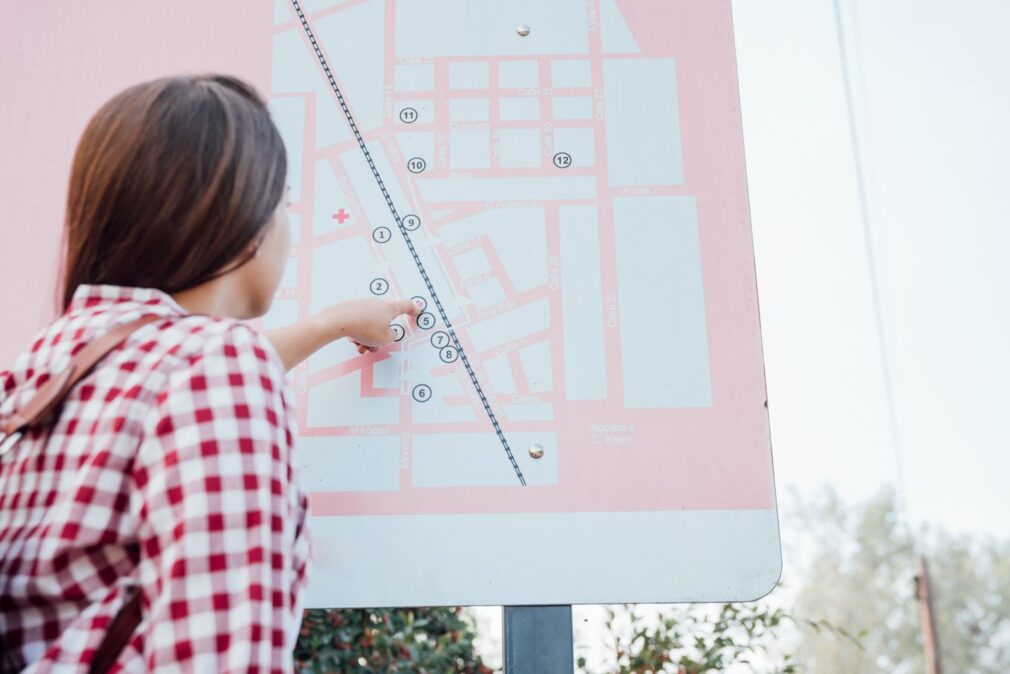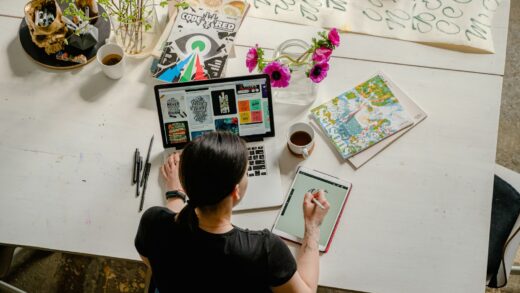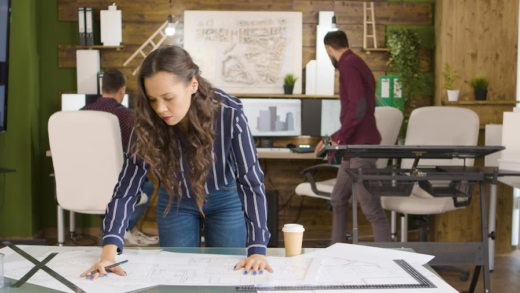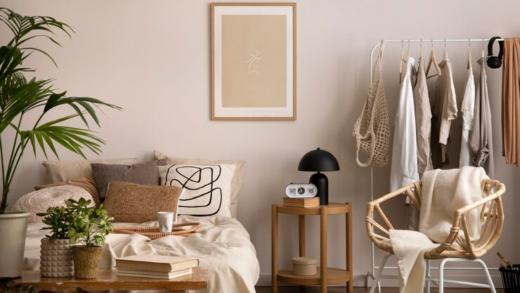Amidst the vast realm of interior design, the significance of wayfinding often goes unnoticed, yet it remains an art with its own distinct expertise. Within physical spaces, companies rely on the artful deployment of graphics and imagery to lead their customers seamlessly, and this very skill is what constitutes the essence of wayfinding design, seamlessly blending into the overall brand experience.
Consider for a moment how you navigate individuals throughout a property; this process seamlessly reflects the very essence of your brand’s personality. It may manifest through whimsical signage, revealing a fun and carefree nature, or perhaps through ingenious solutions that showcase your technical prowess. In any case, wayfinding exerts a direct influence on how people perceive your organization. Its role is pivotal.
Now, let’s delve into the world of a wayfinding designer and explore the intriguing facets of this captivating field.
Unraveling the Art of Wayfinding Design: Navigating the World Seamlessly
Wayfinding design is an intriguing world of signage and visual cues that blend harmoniously with the built environment to guide people effortlessly towards their destinations. But it’s not just about pointing the way; it’s an artful fusion of psychology, design, and engineering to create effective navigational solutions for large and complex environments. Think of it as a captivating dance of design elements that encourages travelers to embark on specific pathways, making the journey as memorable as the destination.
Imagine stepping into an art gallery or a museum, where every turn beckons you to explore further. That’s the magic of wayfinding strategies at work. These designs skillfully direct the flow of traffic, guiding visitors through exhibits in a carefully orchestrated sequence, enriching their experience in the process.
The process of crafting such captivating wayfinding systems is a strategic exercise that calls upon a diverse array of disciplines. Behavioral psychology comes into play to understand how people perceive and interact with their surroundings. Product design ensures that the physical elements, from signage to maps, are not only aesthetically pleasing but also functional and durable. Meanwhile, graphic design gives life to a unique pictorial language, weaving typography, iconography, colors, patterns, symbols, small graphics, and environmental graphics into a seamless narrative.
It all starts with a meticulous analysis of the building or urban space at hand. Wayfinding designers become detectives, studying the nooks and crannies of the environment, identifying potential pain points, and envisioning the perfect paths to guide people smoothly. Armed with this knowledge, they embark on a creative journey to craft a visual language that speaks directly to the hearts of visitors.
The applications of wayfinding design are far-reaching, extending across various sectors, from hospitality and leisure establishments to residential and commercial buildings. Whether you’re navigating a sprawling shopping mall or a modern office complex, the presence of a well-crafted wayfinding system can turn what could have been a confusing experience into a delightful journey of discovery.
Discovering the Skills Needed for a Successful Wayfinding Designer
Understanding the Essence of Wayfinding Design
To excel as a wayfinding designer, you must possess a keen eye for detail. Strong editorial design skills are crucial for crafting graphic layouts that deliver clear, concise, and cohesive messaging on signage. But it doesn’t end there. Your imagination should soar beyond the confines of a computer screen; you need to envision your work within the vastness of a real-world, large-scale environment. The goal is to seamlessly integrate your designs into the physical space, guiding and assisting people without interrupting their experience.
Collaboration and Adaptability
In the realm of wayfinding design, collaboration is key. As a wayfinding designer, you’ll find yourself working with diverse clients from various creative backgrounds. Your collaborators may include branding designers, interior designers, architects, and property developers. This interdisciplinary approach is advantageous as other creatives bring unique perspectives and expertise to the table.
The ability to work harmoniously with your fellow creatives is crucial. As you embark on wayfinding projects, you’ll encounter challenges and opportunities that require open dialogue and compromise. While you bring your expertise in guiding human movement, other professionals will provide insights into implementation boundaries and constraints. This dynamic exchange of ideas enriches the overall design process, leading to solutions that harmoniously blend aesthetics, functionality, and purpose.

Embracing the Virtue of Patience
Patience is a virtue that holds immense value in the realm of wayfinding design. This profession is not for those seeking quick turnarounds or instant gratification. Many wayfinding projects, especially those involving large buildings or complex environments, are long-term endeavors. For instance, envision working on a grand cruise ship scheme—a project that typically spans three to five years. The gestation period of your designs can be lengthy, but the reward is seeing your creations seamlessly guiding passengers on their journeys.
In some cases, you may be working on projects for brand-new buildings. This means that you might not witness the fruition of your efforts for months, or even years, as construction and implementation take time. Embrace this patience and recognize that enduring commitment to your craft ultimately leads to rewarding outcomes.
A Day in the Life of a Wayfinding Designer: Navigating the World of Seamless Experiences
As the first rays of sunlight filter through the office windows, the wayfinding designer embarks on a journey of creativity and problem-solving. With a steaming cup of coffee in hand, the day begins at 9 am. The morning ritual involves diving into the digital realm, checking emails, and consulting the trusty diary. It’s crucial to synchronize the tasks and align priorities with the project managers. After all, the life of a wayfinding designer is often bustling with numerous projects, each demanding a unique touch.
The canvas of wayfinding design stretches beyond the boundaries of the office walls. In the early stages of a project, the designer and their colleagues venture out to explore sites or meet with clients. This real-world experience lays the groundwork for understanding the specific needs and characteristics of each location.
At the heart of the wayfinding designer’s daily tasks lies a rich tapestry of activities. The intricate process includes a symphony of online and real-world research, the orchestration of prototype graphics, the harmonization of focus groups, and the tempo of testing phases. Collaboration is the secret ingredient that elevates wayfinding design to new heights. The designer conducts meetings with a diverse ensemble of professionals, such as product designers and production teams, to ensure a harmonious melody resonates across all stages of the project.
The designer’s creativity takes flight after the research phase. Armed with inspiration, they experiment with various fonts, wield the pen to sketch pictograms and patterns, and explore the nuances of different sizes. The tangible results manifest as prototypes, which are then carefully reviewed and tested. Legibility emerges as a key objective in wayfinding design, ensuring that people can effortlessly navigate spaces and information.
In the strategy stage, the designer takes on the role of a cartographer, marking up specific signage location plans to chart the most efficient solutions. Routes and scenarios are carefully evaluated, and feedback is gathered on-site. Understanding human behavior and movement becomes pivotal in crafting designs that seamlessly guide crowds through spaces, like a conductor guiding an orchestra to its crescendo.
Once the client greenlights the signage locations and graphics, the wayfinding designer transitions from the drawing board to the manufacturing table. Preparing detailed manufacturing drawings is an intricate process, where adherence to strict guidelines is essential. Every size, spacing, and proportion is meticulously calculated to ensure the perfect fit for each sign type.
Navigating the Maze: The Art and Science of Wayfinding Design
As designers delve into the world of wayfinding, designers are confronted with a myriad of challenges, all demanding their attention and ingenuity.
The Balancing Act of Functionality and Aesthetics:
At the heart of every wayfinding project lies the delicate balance between functionality and aesthetics. Designers are challenged to craft signage and directional elements that not only serve their purpose flawlessly but also evoke a sense of artistic brilliance. They must consider whether signs should be interchangeable, adapting to changing circumstances, or if they should remain steadfast in their purpose. Choosing the right typeface is an art in itself, as it must be both visually appealing and legible from various distances and angles. Moreover, wayfinding designers must grapple with the longevity of materials, ensuring their creations can withstand the unforgiving forces of nature in different weather conditions.
Expanding upon this challenge, wayfinding designers are not just working on a two-dimensional canvas. They must think in grand scales, as they tackle the 3D element of spatial design. Navigational elements should be easily visible and immediately comprehensible to a diverse array of individuals. The challenge lies in creating designs that transcend language barriers and cultural differences, providing clarity to anyone who sets foot in the space. Achieving this goal requires a deep understanding of how people perceive and interact with their environment.
To overcome these obstacles, wayfinding designers immerse themselves in the realm of three-dimensional products. They develop an intimate knowledge of materials, studying their properties and durability to ensure the final product remains resilient and aesthetically pleasing. Moreover, they harness the power of lighting, strategically illuminating signs to guide visitors effortlessly through the labyrinthine corridors.
The Perpetual Motion of Creativity:
For wayfinding designers, the creative process is akin to a perpetual motion machine. They are driven by an unyielding passion to create exceptional experiences for users, making it challenging to switch off from their work. There are tight deadlines to meet, an inherent characteristic of the creative industries, but this only fuels their determination to deliver excellence.
The complexity of wayfinding projects often demands working closely with architects, urban planners, and stakeholders, further necessitating seamless communication and coordination. Amidst the intricacies of the design process, wayfinding designers must remain adaptable and innovative, embracing new technologies and emerging trends to elevate their craft.
The Tightrope Walk of Design Constraints:
Wayfinding designers must walk a tightrope, skillfully navigating through a web of design constraints. The principles of legibility must be upheld, ensuring that signs and directions are easily comprehensible at a glance. At the same time, they face production limitations, which may impose certain boundaries on their creativity. The challenge lies in harmonizing these constraints with the tenets of excellent graphic design, where aesthetics and functionality coexist in perfect harmony.
In the world of wayfinding, planning permissions can be an additional obstacle. The creative vision must align with the regulations and requirements set by local authorities, preserving the integrity of the space while enhancing its navigability.
Conclusion
In conclusion, the role of a wayfinding designer is an intricate and dynamic profession that profoundly impacts our daily lives in ways we might not even realize. As we’ve explored the multifaceted nature of this field, it’s clear that wayfinding designers play a crucial role in shaping the experiences of individuals within the built environment. Their expertise in understanding human behavior, spatial cognition, and visual communication allows them to create navigational systems that seamlessly guide people through complex spaces, fostering a sense of confidence, safety, and connection.





